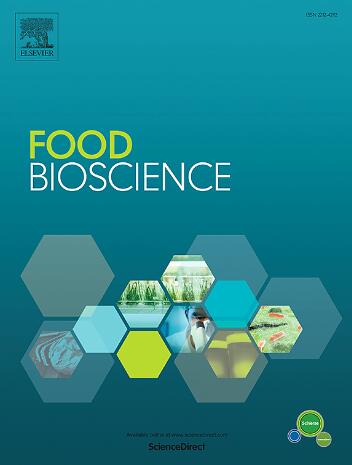Maturity-dependent variations in metabolites and taste quality of Hainan mulberry leaf green tea by using metabolomics and e-tongue analysis
IF 4.8
1区 农林科学
Q1 FOOD SCIENCE & TECHNOLOGY
引用次数: 0
Abstract
Current research on mulberry leaf tea primarily focuses on biological activity studies, while limited research has been conducted on its taste quality. In this study, we evaluated the taste quality of Hainan mulberry leaf (HNSY) green tea at three maturity levels using sensory evaluation, an electronic tongue, quantitative chemical composition analysis, and metabolomics. Sensory evaluation and e-tongue analysis revealed that astringency decreased while acidity increased with advancing maturity. Moderate bitterness and astringency were identified as favorable taste characteristics of HNSY green tea. Metabolomic analysis identified 185 differential metabolites, and 11 characteristic taste components were subsequently determined through correlation analysis. Specifically, asparagine, leucine, and isoleucine contributed to enhanced umami perception and bitterness intensity in young mulberry leaf tea. Conversely, l-tyrosine, 4-hydroxystachydrine, rutin, kaempferol 3-o-sophoroside, 6-hydroxy luteolin 7-glucoside, isoquercitrin, kaempferol 3-neohesperidoside, and magnolioside were associated with reduced astringency in high maturity tea. Therefore, strategic regulation of harvesting maturity in mulberry leaf tea production could optimize metabolite profiles and improve overall flavor quality. This study provides a theoretical basis for raw material selection and quality control in HNSY green tea processing.

求助全文
约1分钟内获得全文
求助全文
来源期刊

Food Bioscience
Biochemistry, Genetics and Molecular Biology-Biochemistry
CiteScore
6.40
自引率
5.80%
发文量
671
审稿时长
27 days
期刊介绍:
Food Bioscience is a peer-reviewed journal that aims to provide a forum for recent developments in the field of bio-related food research. The journal focuses on both fundamental and applied research worldwide, with special attention to ethnic and cultural aspects of food bioresearch.
 求助内容:
求助内容: 应助结果提醒方式:
应助结果提醒方式:


